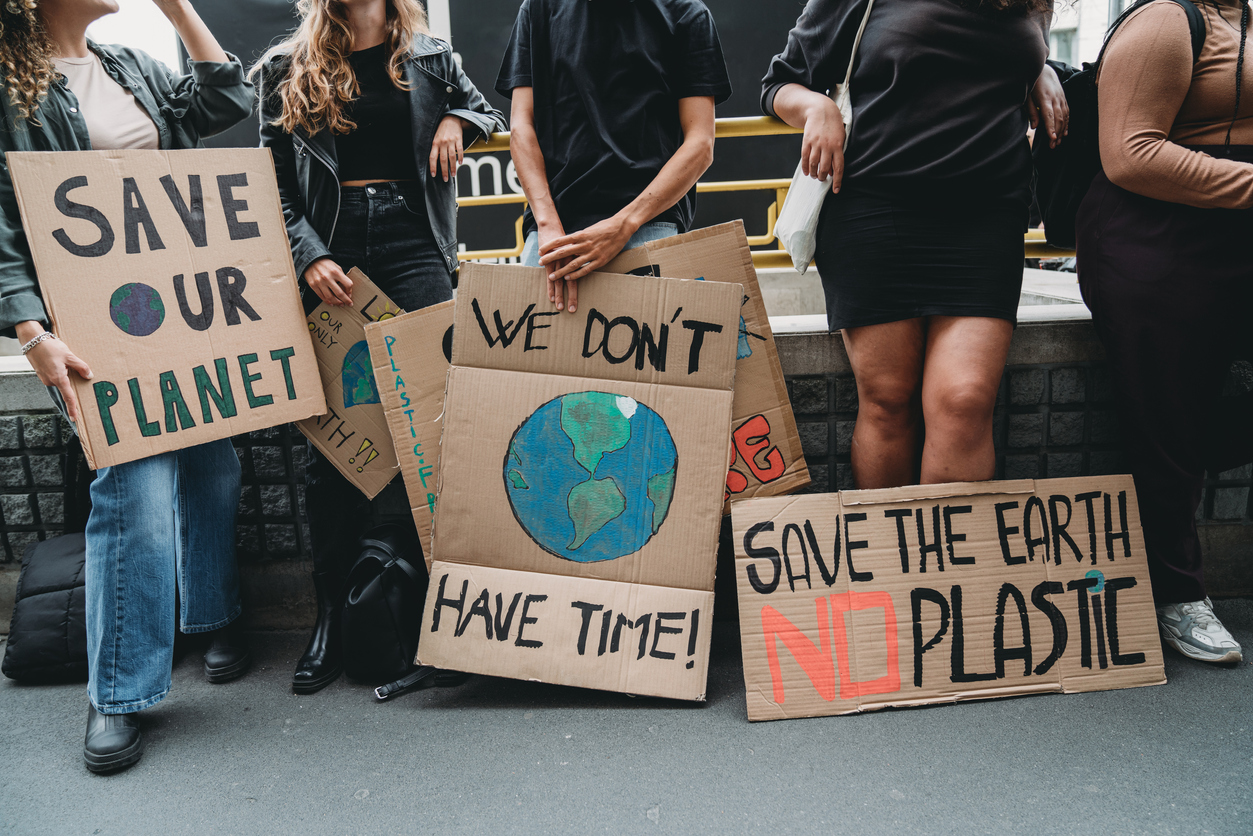Towards the end of 2022, Merriam-Webster announced that they had added “greenwash” to the dictionary.
It’s an unsurprising addition: by some counts, over a third of global consumers would pay more for sustainable products. Organizations around the world have taken note, and sustainability branding is now ubiquitous.
Unfortunately, many have bent the truth to win customers. The rise of greenwashing has put consumers (and regulators) on high alert, with surveys suggesting that the majority of people in countries like the UK and the USA are skeptical when a brand claims to be sustainable.
Navigating sustainability skepticism
It presents a challenge for businesses that are genuinely committed to human, social, and environmental improvement. Consumers want to buy from those brands, so sustainability messaging is a competitive necessity. They’re no longer easily convinced, though.
Crafting an effective sustainability story in the post-greenwashing marketplace is a matter of passion, authenticity, and specificity. Here’s how to do it.
Short on time? Click here to jump to our sustainability messaging dos and don’ts.
Be authentic - and honest
With skepticism at an all-time high, building authenticity and honesty into your sustainability story is not exactly groundbreaking advice.
What does that actually look like in practice, though? At a bare minimum, it means that you need to be able to back up any claims about environmental or social efforts with hard evidence.
It’s important to be realistic, too. What are your business’s motivations for pursuing sustainability, where have you been successful, and what work do you still need to do?
Sweeping positive claims can raise suspicion. It’s often more valuable to acknowledge shortcomings than it is to pretend you’ve covered every base. Sustainability is a journey, so let your audience know how far you’ve come.
What 'good' looks like: Yamo
Healthy children’s snack producer Yamo offers a fantastic example of authentic messaging. Yamo get a lot of things right – their production process is environmentally-sensitive, they advocate for plant-based living, and they’re able to quantify the positive impact they have with numbers.
What really sets their story apart, though, is they don’t claim to have figured everything out. Yamo opts for a realistic, human approach: “We know that we are not perfect, but we are working on it!”
They’re pragmatic about packaging challenges, and up-front about their desire to address them. By explaining the problem, they make it easier to sympathize and understand why they’re still figuring things out:
Importantly, they’re not claiming that their hands are tied. They’ve opted for recyclable plastic, and are specific about the plastic they’ve committed to compensate, while they search for a solution.
It’s an approach that cultivates trust, and makes the rest of their sustainability achievements that much more engaging and impressive. Consumers can sympathize with challenges – as long as you’re committed to finding a solution.
Write for consumers, not board members
Avoid writing for the “person in the mirror” when deciding what to highlight. While you and your investors might want to know how you stack up to specific ESG metrics in detail, potential customers probably don’t speak in those terms.
Consumers are likely more interested in how they fit into your sustainability story. What impact will they be making with their purchasing decision if they choose your business? Generic bullet points won’t tell an engaging story, but neither will a forensic ebook.
Distill your story with customers in mind to create a sustainability “elevator pitch”, grouping information around a few key themes. If you can explain it to someone in simple and compelling terms, they can pass that information on when telling others about your products or services.
Consumers want to live more sustainably, so empower potential evangelists with a story they can put themselves at the heart of.
What 'good' looks like: GRIND
Cult London coffee company GRIND is taking on one of their industry’s biggest sustainability challenges: hard-to-recycle coffee pods. Their sustainability messaging is accessible and educational, but more than anything else, it’s inclusive.
Customers are at the heart of their story. They make it clear that by choosing their pods, consumers are making more environmentally-friendly cups of coffee:
It’s an approach that positions consumers as collaborators in their effort to improve the coffee industry. They’re specific about what exactly their customers can do to make a difference:
GRIND’s sustainability strategy isn’t limited to compostable pods. The company also partners with socially responsible coffee growers, and offsets industry pollution by preventing plastic from entering the oceans through, well us.
As ever, customers are front-and-centre:
Link a unique story to the bigger picture
Balance specificity with context. “Random acts of sustainability” that aren’t linked to your specific product or service (think team-building tree planting days) are still useful, but they don’t make for a compelling story – or an impactful sustainability strategy. The same goes for vague, difficult-to-quantify commitments.
They could even work against you: there have been high profile examples of vague sustainability messaging resulting in widespread backlash, so it’s best to err on the side of clarity.
Highlight the actions your business is taking to improve your specific product, service, or industry. GRIND makes it clear that they’re taking on a coffee-specific sustainability challenge, for example. Importantly, they also link everything to a “why”.
Compostable coffee pods aren’t interesting for their own sake. They’re interesting because they reduce reliance on virgin aluminum production, and result in fewer recyclable materials polluting the natural environment.
By tying your specific actions to wider environmental, social and human challenges, you can show consumers exactly why that work matters, and why they should get excited about it, too.
What 'good' looks like: PRESS and Krombacher
London-based PRESS sells juices, smoothies, soups and more. They use their product focus to act as advocates for plant-based living, linking individual dietary decisions to wider environmental impact.
As with GRIND, they connect their mission – and seemingly small consumer decisions – with the much larger drive towards sustainability:
They get specific about the impact of their efforts, too. Instead of leaving it at “We’re proudly plastic neutral”, they navigate the greenwashing challenge by explaining exactly what that means, how they’ve achieved it, and how much they’ve contributed to the much larger issue of global plastic reduction:
German brewery Krombacher makes it clear that the stakes are high when it comes to sustainability. Their product is dependent on the health of 'Felsquellwasser', the naturally-soft rock spring water that differentiates them amongst other brewers.
They refer to the water as “their most valuable treasure”, and describe how that appreciation grew into a wider desire to protect the broader environment:
Without a healthy landscape, Krombacher couldn’t exist. It’s a story that makes their sustainability effort that much more compelling, trustworthy and urgent.
What to keep in mind when telling your sustainability story
With any luck, those examples will have given you a clear idea of the difference between generic sustainability content and genuinely compelling stories.
There’s a lot to keep in mind, so we’ve distilled the basic do’s and don’ts. Keep them handy when the time comes to write your own sustainability story, and you’ll avoid the most common pitfalls:
- Do: Be authentic
- Don’t: Lie or exaggerate your efforts
- Do: Give credit to third-party organizations, if applicable (and credible!)
- Don’t: Write for investors or board members
- Do: Make your customers part of the story
- Don’t: Make big promises that you can’t deliver on
- Do: Give details to back up your story
Compelling, truthful messaging is just one part of a larger effort to avoid greenwashing. As consumers become more discerning, it’s a challenge most organizations will need to contend with.
To make sure you’re covering the most important bases, check our anti-greenwashing checklist.


-3.png)


.webp?width=380&name=Diversity-and-inclusion%20(1).webp)

.webp?width=380&name=Beach-litter%20(1).webp)
.webp?width=380&name=ESG-laptop%20(1).webp)



.webp?width=380&name=CleanHub-processing%20(1).webp)
.webp?width=380&name=Refill%20product%20(1).webp)
